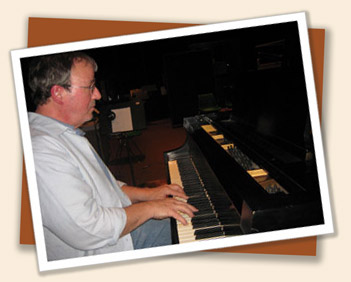 On Christian Music …
On Christian Music …
The music here is intended to worship and glorify God and his Kingdom, the Risen Christ Jesus, and ministry of the Holy Spirit, but it is not what is typically known as “Praise and Worship” music. One cannot deny the positive impact that Contemporary Christian Music has had on the Body of Christ, and, obviously God has affirmed and confirmed this genre. Worship leaders all over the world intentionally design the songs of CCM to encourage group participation, to provide the individual worshiper with the opportunity to sing directly to God, extolling God’s love, greatness, power and purpose, and to express—in response to God’s own initiative and self-disclosure—one’s own love for God and the Lord Jesus Christ. God is honored by such expressions, and God honors them. He truly does “inhabit the praises of His people” (Psalm 22:3).
Many contemporary Christian songs are written in the first person (“I”) and sung to God using the second person pronoun (“You” or “Thou/Thee”), and are meant to edify individual believers/worshipers, and allow them to offer their own praises and thanks to God. Christian writers/composers, out of concern for the needs of such believers/worshipers, and to facilitate the sung expression of praise, realize that many, if not most, people are not musicians. Musical memory (important for learning a tune) and vocal ranges, for most individuals, are not the same for more talented or more experienced players. As a result, the musical philosophy of many Christian writers is to make the song as simple as possible—both melodically and harmonically—in order that the average man or woman “in the pew” will be able to easily learn and sing the song.
To make such facilitation a reality, some Christian composers self-consciously and intentionally try to use the fewest number of chords and notes as possible in their works. On the positive side, and to their credit, these writers hope to engage the entire gathered and worshiping body and to encourage all to “offer the sacrifice of praise.” There is real validity in preserving the ”simplicity of the gospel.” However, on the negative side, there is a real danger—it seems to me—that simplifying (perhaps over-simplifying) the music and the message will limit the God who made the music and its many varieties of expression, will limit the myriad of experiences of faith, and will limit the ones who appreciate them and who want, and who have the capacity, for receiving more. Over-simplifying the song assumes that the majority of people are not capable of comprehending more complex melodies, harmonies, rhythms, or theological content. But, overall, real experience does not always bear that out.
“Classical” (the generic term, not the historical period) music, for example, with its rich textures, both vertically (chords) and horizontally (notes), consonance and dissonance, rhythmic variations, abounding modulations (key changes), tonal and modal coloring, instrumentation, orchestration, and complex structures can be incredibly dense and complicated. The exact same thing can be said of jazz and other more contemporary musical forms. Many, myself included, love both classical music and jazz. And many persons also appreciate other genres, such as so-called “World Music,” folk, blues, country, and the many sub-categories within those broader labels.
I believe that there should be a place for songs that employ musical textures in numerous styles and a wider use of scriptural/spiritual topics than those that merely express how much one loves God, and how much God loves us. In order to give a more adequate expression to what God has done in creation, what God has done in Christ, and what God is doing and will do in his body, I believe that because these subjects can be difficult to articulate, less constricting and less limiting forms are necessary. This is not to say that profound concepts cannot be simply expressed. But it is to say that sometimes the content of the message should dictate the form. And the reverse is true as well: the form should be appropriate to the message it is attempting to communicate. “Form follows function” has always been a good rule of thumb for me.
The original songs here use forms from jazz to country to blues to rock ‘n’ roll to gospel, both black and white. New and old hymns are represented in formats that seek to retain the authenticity of the hymn, and in most cases the basic melody and harmony, while using a different meter and tempo. Some hymns have been given completely different musical treatments. But all of the songs attempt to convey the broadest range of spiritual and biblical topics and seek to worship “in Spirit and in Truth” the God and Father of the Risen, Living Christ, the Lord Jesus.

